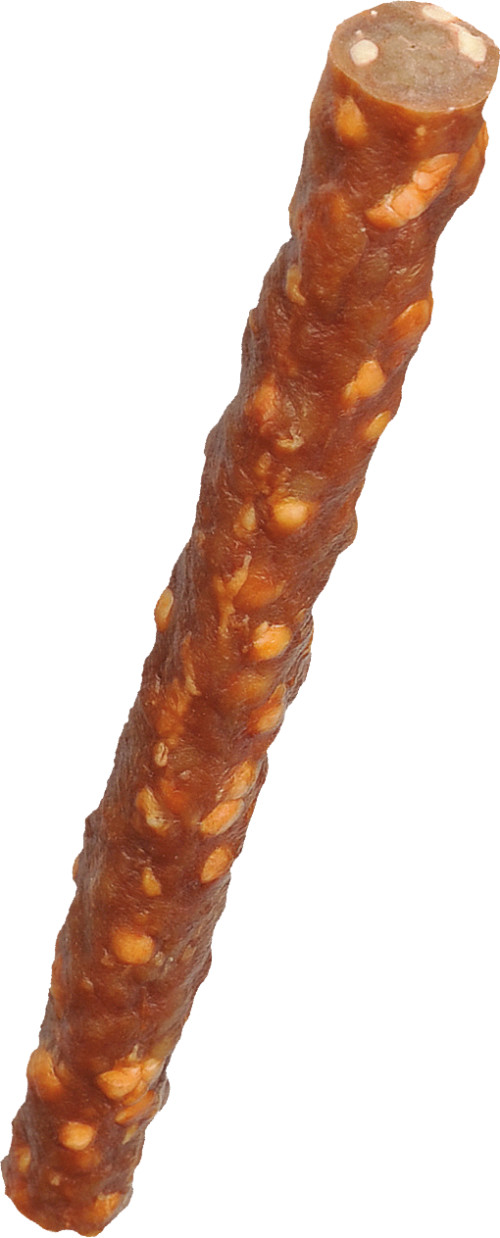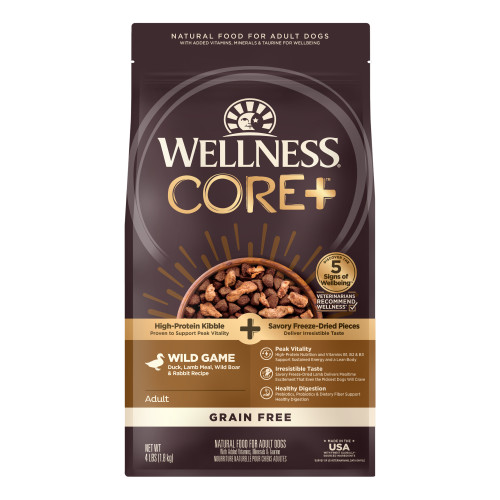April 1, 2017
Understanding Cat Food Labels
For a pet parent, reading the food label on your cat’s dry or wet food packaging, and, understanding the written content at a glance, offers peace of mind in knowing that your cat is getting a balanced and highly nutritional diet to support her overall health and well-being.
The goal of all Wellness labels is to make the information takeaway as easy as possible to find on the packaging.
Cats are carnivores (meat eaters). That means they require two to three times the amount of protein that humans do. Consequently, diets offering high meat, poultry or fish proteins, along with moderate amounts of fat and minimal carbohydrates boosted with vitamins and minerals are best to meet a cat’s nutritional needs.
LABEL BASICS
Like human foods, all pet food brands are regulated under the Federal Food, Drug, and Cosmetic Act, and must be truthfully labeled. Also they are governed by labeling regulations recommended by the Association of American Feed Control Officials (AAFCO) that set the basic ingredients guidelines that by law must be acknowledged on every label.
Also, every label has to include the product name, net weight, statement of purpose or intent, ingredient list, guaranteed analysis, feeding directions, nutritional adequacy statement, and a statement of responsibility.
The product name: The product name explains what kind of what food it is, highlighting the key ingredient/s, and the words used in the name must conform to AAFCO regulations. For example, a product cannot be named “chicken” unless 95 percent of its weight is chicken, not including moisture content. If a product contains two key ingredients, such as chicken and fish, then the product has to contain more of whichever one is named first, but together they must add up to 95 percent.
The statement of responsibility: This statement lists the name of the company responsible for making the product, as well as the address and, where possible, a toll-free phone number so that customers can quickly and easily obtain product information. In addition to stating that the product is guaranteed, the company should indicate what action would be taken to meet customer expectations, such as replacing the product or giving a money-back guarantee.
All Wellness cat recipes whether they are in bags, cans or pouches all have a 100% Catisfaction Guarantee, whereby any unused product in its original packaging, along with the purchase receipt can be returned to the store where it was bought for a full, no-questions-asked refund.
The net weight: This has to state exactly what the food in the container weighs.
The statement of purpose or intent: The packaging must state that the food is specifically for cats. This is to draw the consumer’s attention to the fact that cats have specific nutritional needs. Most Wellness packaging has an image of a cat too.
The AAFCO Nutritional Adequacy Statement means that the manufacturer has to detail for which specific lifestyle and age of cat the food is intended.
All Wellness Natural Pet Food recipes include all this relevant information and meet these AAFCO basic guidelines. However, because they are just guidelines, pet foods can differ in terms of the quality and the ingredients in their recipes. And the Wellness feline formulas offer cats balanced nutritional meals that go beyond these basic requirements.
The purpose of all the latest packaging is to highlight on both the front and the back of dry food bags (and of course of canned labels) all the key ingredients and to explain the role that the proteins, along with fresh fruits and vegetables, as well as the right amount of vitamins and minerals play in a cat’s overall diet to thrive. This demystifies the list of ingredients and eliminates the guesswork is trying to ascertain what is right for your cat.
HIGHLIGHTING THE INGREDIENTS THAT GO INTO A WELLNESS RECIPE
In an effort to inform pet parents about the individual recipes, the Wellness products also highlight the various other ingredients that are included, spelling out why they are recipes essentials for overall feline health.
For example, the Complete Deboned Chicken, Meal and Rice details the nutritional requirements essential to excellent feline health as follows:
• Essential vitamins and minerals such as Omega-3 and Omega-6 fatty acids support a healthy skin and coat.
• Prebiotics and probiotics along with a chicory root extract and fiber are in the recipe to aid healthy digestion.
• The levels of Calcium, phosphorous and vitamin A support healthy eyes, teeth and gums.
• While vitamins such as vitamin E and vitamin A are included to promote a healthy immune system.
The way these nutritional facts are presented makes it very easy to cross-reference them on the ingredients list.
It’s equally important for a pet parent to be aware of what is not included in the recipe your cat loves such as meat by-products, wheat, corn or soy, artificial preservatives, colorants and flavors. It is these exclusions that make an all-natural recipe different from non-natural pet foods.
When it comes to small cans and pouches, although the ingredients are listed, space precludes detailing the benefits of the ingredients. So it’s a really good idea to do your homework on the website before shopping. Of course you can always reference information on the dry food packets as this relevant ingredient information crosses over to wet food recipes as well.






